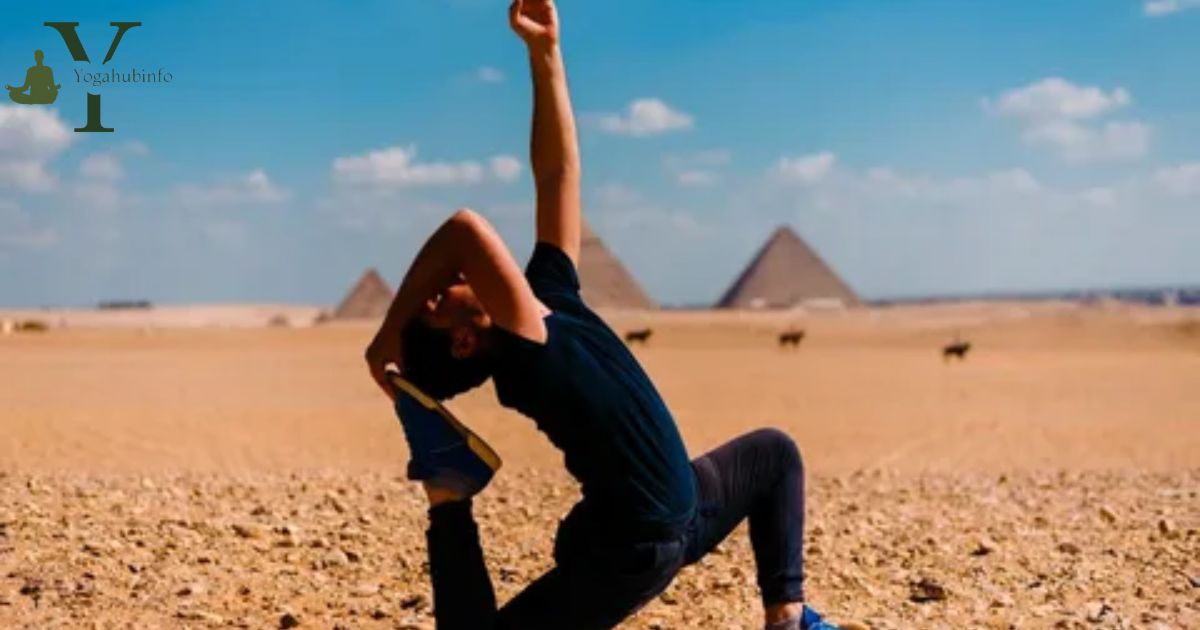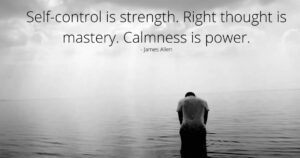Balancing energy through Kemetic Yoga poses involves intentional movements and postures inspired by ancient Egyptian practices, promoting harmony and alignment of the mind, body, and spirit for overall well-being.
Balancing energy in Kemetic Yoga involves using ancient Egyptian-inspired poses to align the body and mind. These poses focus on connecting with the earth’s energy and channeling it through the body. By practicing Kemetic Yoga, individuals aim to achieve physical and spiritual equilibrium. This holistic approach promotes a sense of harmony and well-being.
Step into the realm of Kemetic Yoga Poses.Where energy achieves perfect equilibrium. Uncover the ancient art of harmonizing breath and movement, intertwining the threads of body and spirit. Allow Kemetic Yoga to be your guide to inner tranquility and vitality, experiencing the transformative dance of energy within.
Kemetic Yoga Poses help balance energy by combining ancient Egyptian philosophy with yoga postures. These poses focus on alignment, breath control, and meditation to promote physical and spiritual harmony. Practicing Kemetic Yoga enhances energy flow, fostering a sense of balance and well-being. It provides a unique blend of physical exercise and spiritual connection for a holistic approach to health.
What is Kemetic Yoga?
| Aspect | Description |
| Name | Kemetic Yoga |
| Origin | Rooted in ancient Egyptian spiritual practices |
| Founder | Yirser Ra Hotep |
| Philosophy | Blends physical movements with spiritual principles |
| Connection to Egypt | Draws inspiration from hieroglyphs, mythology, and deities of ancient Egypt |
| Poses and Sequences | Unique postures and sequences based on African cultural symbols and animals |
| Breathwork | Emphasis on controlled, rhythmic breathing |
| Meditation | Incorporates meditation and visualization techniques |
| Benefits | Enhances flexibility, strength, and spiritual awareness |
| Inclusivity | Open to individuals of all ages and fitness levels |
| Cultural Context | Acknowledges African heritage and spirituality |
| Global Presence | Growing popularity beyond African diaspora |
| Resources | Books, workshops, and online classes available for learning |
Kemetic yoga, originating in Egypt, emphasizes the flow of energy throughout the body to establish a connection with higher intelligence and the divine. Unlike standard asana classes, Kemetic yoga adopts a slower pace, placing greater emphasis on meditation and the chakras, the body’s energy centers. The physical postures derive inspiration from depictions of the ancient .
Egyptian gods and goddesses. Despite its African roots, Kemetic yoga has often been overlooked in mainstream yoga culture, reflecting historical oppression against people of African descent in North America. The contributions of individuals from diverse backgrounds to modern society, including the development of global culture, are frequently omitted from history books.
Prominent scholars of Kemetic culture, such as Sehu Khepera Ankh, St.
Clair Drake, and Yirser Ra Hotep, strive to increase awareness of Kemetic yoga, specifically highlighting its African influence on contemporary spiritual practices. Exploring the connections between Africa and yoga reinforces the idea that the practice is inherent, a part of one’s cultural identity.
In ancient times, Egypt was known as Kemet or KMT during the pharaonic era. Research suggests that the first Egyptians were black-skinned and hailed from regions like Sudan, Ethiopia, southern Arabia, and Babylon. The Kemetic people, who constructed pyramids, made significant contributions in fields such as mathematics, architecture, chemistry, and medicine. Their ideas were often expressed through sacred symbols found in pyramids and tombs, exemplified by Tutankhamen’s burial site.
Yirser Ra Hotep, also known as Elvrid Lawrence, stands as the foremost instructor of Kemetic yoga in the United States, boasting over thirty years of practice and teaching experience. His extensive writings explore Kemetic symbols and their connections to yoga. Hotep contends that the symbolic drawings and carvings of ancient people may seem obscure and mysterious to modern eyes but are clear and magnificent when viewed through the lens of their worldview.
Hotep provides an example, discussing a carving on a chair found in King Tut’s tomb depicting a man named Shu, elucidating the symbolic significance of Shu in Kemetic culture.
Origin of Kemetic Yoga
Kemetic Yoga originates from ancient Egypt, known as Kemet, one of the world’s oldest civilizations situated in Northeastern Africa. It stands as a parallel to the development of Yoga in India. This unique form of yoga evolved through the study, translation, and interpretation of hieroglyphic texts from Kemet (ancient Egypt) and the depiction of Yogic postures found on the walls of Kemetic temples.
Functioning as both a philosophy and a practice, Kemetic Yoga™ is rooted in the self-development systems of Kemet. These systems were instrumental in shaping the Kemetic civilization, which, in turn, gave rise to Western science, philosophy, and religion.
Kemetic Wisdom: Embracing the 42 Laws of Maat
The ancient Egyptian civilization, with its rich tapestry of mythology, spirituality, and philosophy, left behind a profound legacy that continues to captivate and inspire. At the heart of this legacy lies the concept of Maat, a fundamental principle that governed the order and balance of the universe. The 42 Laws of Maat, also known as the Declarations of Innocence, serve as a guide for righteous living, moral conduct, and spiritual enlightenment.
Maat, often personified as a goddess, represents the universal order, truth, justice, and harmony. The 42 Laws, inscribed on the walls of ancient Egyptian temples and tombs, were believed to be the teachings of Maat to guide individuals on their journey through life and beyond. These principles encapsulate a holistic approach to morality and ethical conduct, emphasizing the interconnectedness of the individual with the cosmos.
The 42 Laws of Maat cover a wide range of aspects, from personal behavior to social interactions highlighting the importance of living in accordance with the natural order of the universe. Some of the key principles include:
- Truth: Speaking and living in truth is foundational to Maat. The pursuit of honesty and transparency in all aspects of life contributes to the cosmic balance.
- Balance: The concept of balance, known as “Maa Kheru,” underlines the importance of maintaining equilibrium in one’s actions, thoughts, and relationships.
- Harmony: Living in harmony with oneself, others, and nature fosters a sense of unity and interconnectedness, aligning with the cosmic principles of Maat.
- Righteousness: Upholding a sense of moral uprightness and virtuous conduct is central to Maatian philosophy. It encourages individuals to act with integrity and compassion.
- Order: Creating and maintaining order in one’s life and surroundings is considered a reflection of Maat’s influence. Disorder is seen as a deviation from the natural order.
- Reciprocity: The principle of reciprocity, expressed as “I have not done wrong to others,” encourages individuals to treat others as they wish to be treated, fostering mutual respect and understanding.
- Non-violence: Avoiding harm to others and resolving conflicts peacefully aligns with the Maatian ideal of maintaining a peaceful and just society.
Embracing the 42 Laws of Maat involves a continuous journey of self-reflection, personal growth, and adherence to ethical principles. Many individuals today draw inspiration from these ancient teachings, incorporating them into modern spiritual practices and ethical frameworks.
As we navigate the complexities of the modern world, the wisdom embedded in the 42 Laws of Maat continues to offer timeless guidance on how to live a life of purpose, integrity, and harmony a life in alignment with the cosmic order that the ancient Egyptians held in such high regard.
Exploring the Advantages of Kemetic Yoga

Kemetic Yoga, rooted in ancient Egyptian spiritual practices, has gained popularity as a unique and holistic approach to achieving mind-body wellness. This form of yoga draws inspiration from hieroglyphs and ancient teachings, providing a distinctive blend of physical postures, breathwork, and spiritual principles. In this exploration, we delve into the advantages of embracing Kemetic Yoga for a comprehensive well-being experience.
1. Ancient Wisdom Meets Modern Benefits
Kemetic Yoga is based on the philosophies of ancient Egypt, combining traditional yoga postures with elements of Kemetic spirituality. This fusion creates a powerful synergy, offering practitioners not only physical benefits but also a connection to ancient wisdom that can enhance mental and spiritual well-being.
2. Unique Postures for Alignment and Strength
One of the distinctive features of Kemetic Yoga is its emphasis on geometrically aligned postures. These postures are designed to promote physical alignment, balance, and strength. Practitioners often find that the unique poses target specific muscle groups, leading to improved flexibility and overall body awareness.
3. Breathwork and Meditation for Mental Clarity
Incorporating deep breathing and meditation techniques, Kemetic Yoga goes beyond physical exercise. The focus on intentional breathwork helps practitioners achieve mental clarity, reduce stress, and enhance concentration. The meditative aspects of Kemetic Yoga contribute to a sense of inner peace and mindfulness.
4. Healing Energy through Chakra Activation
Kemetic Yoga places a strong emphasis on chakra activation, aligning with the energy centers in the body. Through specific postures and sequences, practitioners aim to balance and activate their chakras, promoting a harmonious flow of energy. This holistic approach contributes to emotional well-being and spiritual growth.
5. Cultivating Spiritual Awareness
Kemetic Yoga is deeply rooted in spirituality, drawing from ancient Egyptian cosmology. Practitioners often report a heightened sense of spiritual awareness, connection to higher consciousness, and a profound understanding of the self. This spiritual dimension sets Kemetic Yoga apart as a transformative practice.
6. Inclusivity and Cultural Appreciation
Kemetic Yoga encourages cultural appreciation and inclusivity. With its roots in African heritage, this practice fosters a sense of unity and respect for diverse backgrounds. In embracing Kemetic Yoga, practitioners often find a deeper connection to their own cultural identity while fostering a sense of community.
A Collection of 12 Kemetic Yoga Poses and Rituals
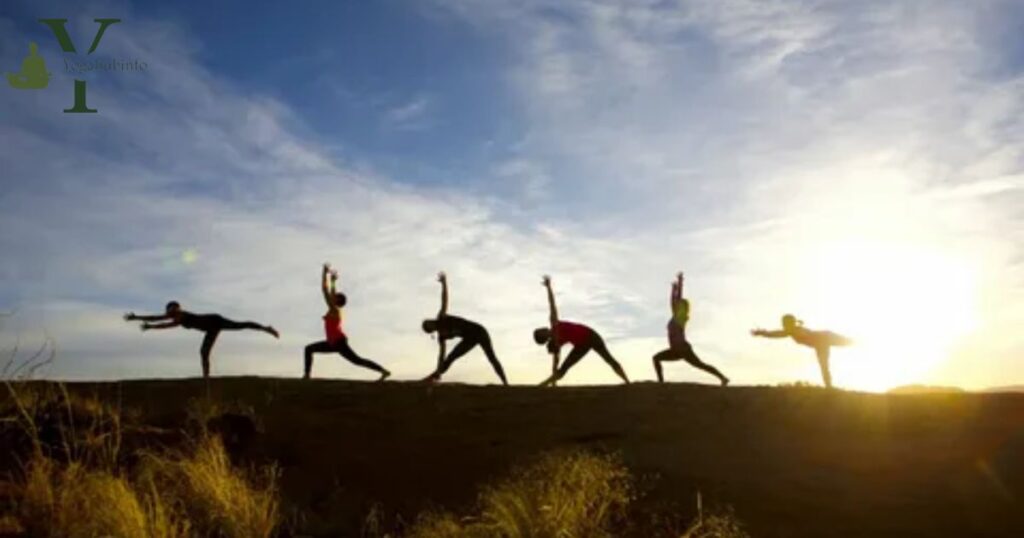
Kemetic Yoga, rooted in ancient Egyptian philosophy, is a holistic practice that intertwines physical postures, breathwork, and spiritual principles. This unique form of yoga emphasizes the connection between mind, body, and spirit, drawing inspiration from the sacred symbols, hieroglyphics, and traditions of ancient Kemet (Egypt). In this collection, we explore 12 Kemetic Yoga poses and rituals that not only promote physical well-being but also invite practitioners to tap into the rich spiritual heritage of the ancient Egyptians.
- Sphinx Pose (Nebthet Asana)
- Begin your journey with the Sphinx Pose, embodying the strength and regality of the ancient Sphinx. This pose promotes grounding and stability, inviting a sense of calm and introspection.
- Lotus of Life (Neser Asana)
- Embrace the symbolism of the lotus flower, a potent representation of rebirth and spiritual awakening. The Lotus of Life pose encourages practitioners to unfold their inner petals and connect with their inner selves.
- Ma’at Balance (Ma’at Asana)
- Reflect on the principles of Ma’at, the ancient Egyptian concept of balance and order. This pose emphasizes alignment and symmetry, fostering physical and spiritual equilibrium.
- Ra Sun Salutation (Ra Surya Namaskar)
- Pay homage to Ra, the sun god, through a series of flowing movements that mimic the sun’s journey across the sky. The Ra Sun Salutation serves as a dynamic ritual to energize the body and invoke the spirit of illumination.
- Ankh Pose (Ankh Asana)
- Incorporate the symbol of the ankh, representing life and vitality, into a heart-opening yoga pose. The Ankh Pose invites practitioners to embrace the essence of life and channel positive energy.
- Thoth Wisdom Meditation (Thoth Dhyana)
- Channel the wisdom of Thoth, the ancient Egyptian deity associated with knowledge and writing. This seated meditation encourages mental clarity, insight, and the cultivation of inner wisdom.
- Isis Flow (Auset Vinyasa)
- Invoke the nurturing energy of the goddess Isis in a flowing sequence that honors the cycles of life. The Isis Flow encourages grace, flexibility, and the recognition of the divine feminine within.
- Horus Warrior Pose (Heru Virabhadrasana)
- Adopt the stance of Horus, the falcon-headed god of the sky and war, in a powerful warrior pose. This posture instills strength, courage, and a connection to one’s inner warrior spirit.
- Scarab Breath (Kheper Pranayama)
- Harness the transformative energy of the scarab beetle in a breathwork ritual. The Scarab Breath involves rhythmic breathing patterns, symbolizing regeneration and the cycles of life.
- Osiris Corpse Pose (Ausar Savasana)
- Surrender to the stillness of Osiris, the god of the afterlife, in a restorative corpse pose. This relaxation ritual encourages practitioners to release tension, rejuvenate, and connect with the eternal nature of the soul.
- Ptah Manifestation Mudra (Ptah Hasta Mudra)
- Activate the power of Ptah, the creator god, through a manifestation mudra. This hand gesture symbolizes the act of bringing intentions into reality, fostering a sense of purpose and creativity.
- Neteru Meditation (Neteru Dhyana)
- Conclude your Kemetic Yoga journey with a meditation honoring the pantheon of Egyptian gods and goddesses. The Neteru Meditation invites practitioners to connect with divine energies, fostering a sense of unity with the cosmos.
Explore More Yoga Styles
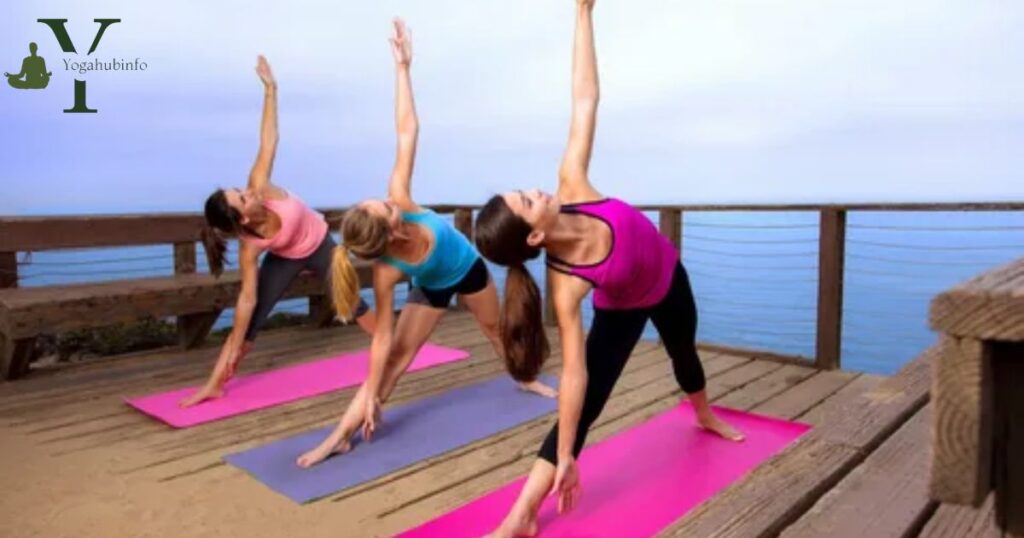
Exploring different yoga styles can be a rewarding journey that not only enhances physical well-being but also nurtures the mind and spirit. Yoga is a versatile practice with numerous styles, each offering unique benefits and approaches to achieving balance and harmony. Here are some diverse yoga styles to consider delving into:
- Hatha Yoga
- A foundational style that focuses on basic postures and breath control.
- Ideal for beginners, as it provides a solid introduction to yoga’s fundamental principles.
- Vinyasa Flow
- Characterized by fluid, dynamic movements that seamlessly transition from one pose to another.
- Emphasizes breath synchronization, promoting a harmonious connection between breath and movement.
- Ashtanga Yoga
- A vigorous and structured practice involving a set sequence of poses.
- Requires dedication and discipline, making it suitable for those seeking a more challenging and structured routine.
- Iyengar Yoga
- Concentrates on precision and alignment of postures, often using props like blocks and belts.
- Excellent for individuals looking to refine their poses and build strength gradually.
- Kundalini Yoga
- A spiritually focused style that combines dynamic movements, breathwork, and chanting.
- Aims to awaken the dormant energy (kundalini) believed to reside at the base of the spine.
- Bikram Yoga
- Practiced in a heated room with a set sequence of 26 postures and two breathing exercises.
- The heat promotes flexibility and detoxification.
- Restorative Yoga
- A gentle, relaxing practice that involves holding poses for extended periods with the help of props.
- Designed to soothe the nervous system and promote deep relaxation.
- Yin Yoga
- Involves holding passive poses for an extended duration, targeting the connective tissues.
- A meditative practice that enhances flexibility and promotes a sense of calm.
- AcroYoga
- Blends yoga, acrobatics, and Thai massage, typically practiced in pairs or groups.
- Focuses on trust, communication, and building strength through partner poses.
- Jivamukti Yoga
- A modern and dynamic style that integrates physical postures with spiritual teachings, chanting, and meditation.
- Advocates for ethical living and environmental awareness.
8 Kemetic & Afro-centric Yoga Teachers to Follow
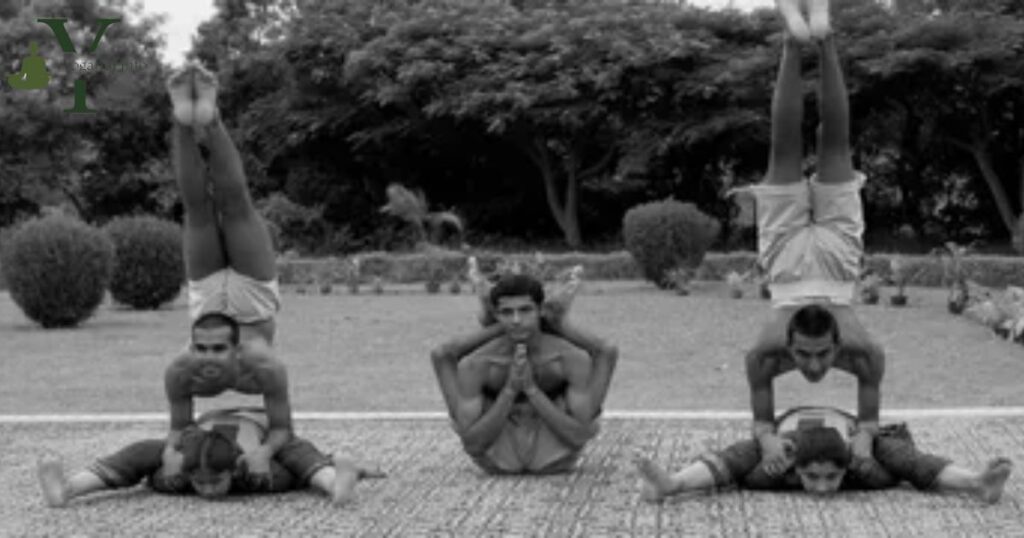
- Explore the fusion of Kemetic and Afro-centric yoga with these eight teachers. Their practices intertwine ancient African wisdom with modern yoga, creating a unique and culturally enriching experience.
- Delve into the teachings of Kemet, the ancient Egyptian civilization, guided by these experts. Their yoga classes incorporate Afro-centric spirituality, offering a distinctive and inclusive approach to well-being.
- Whether you’re a beginner or an experienced yogi, these instructors bring a fresh perspective to the mat. Embrace the diversity of Kemetic and Afro-centric yoga through their guidance, fostering a holistic connection between mind, body, and heritage.
Frequently asked Questions
What is Kemetic Yoga, and how does it differ from other yoga practices?
- Kemetic Yoga, inspired by ancient Egyptian hieroglyphics, utilizes geometric poses to balance energy, distinguishing itself in promoting physical and spiritual well-being.
How can Kemetic Yoga Poses help in balancing energy levels?
- By aligning energy centers through specific postures, Kemetic Yoga fosters a harmonious life force flow, enhancing vitality, mental clarity, and overall health.
Can beginners practice Kemetic Yoga, or is it suitable only for experienced practitioners?
- Kemetic Yoga is inclusive for all levels, with beginners starting from foundational poses and progressing as they build strength and flexibility.
Are Kemetic Yoga Poses primarily focused on physical benefits, or do they also address spiritual aspects?
- While enhancing physical strength, Kemetic Yoga equally emphasizes spiritual connection, aiming to align the body, mind, and spirit for holistic well-being.
How frequently should one practice Kemetic Yoga to experience noticeable energy balance?
- Regular practice, even a few times a week, cultivates sustained energy balance, promoting a centered and grounded existence through Kemetic Yoga Poses.
Final Thoughts
Balancing energy through Kemetic Yoga Poses goes beyond the physical realm, delving into a profound spiritual experience. These ancient poses, rooted in Egyptian traditions, align the practitioner with cosmic energies, fostering a deep sense of inner peace and spiritual awareness. Kemetic Yoga becomes a gateway to explore the divine within, allowing individuals to tap into a reservoir of energy that transcends the limitations of the material world.
The unique postures of Kemetic Yoga facilitate the alignment of the body’s energy centers, promoting optimal vitality. Each pose targets specific energy pathways, ensuring a balanced flow throughout the entire system. This not only contributes to physical health but also revitalizes the energetic essence within, fostering a state of overall well-being.
Beyond the yoga mat, the principles of Kemetic Yoga extend into daily life, offering a blueprint for maintaining balance. Incorporating Kemetic Yoga principles into daily routines allows individuals to navigate challenges with poise and resilience. Kemetic Yoga becomes not just a practice but a guiding philosophy for achieving equilibrium in both the physical and metaphysical realms.
Harmonize mind and body with Kemetic Yoga poses, channeling energy for balance and vitality. Elevate your well-being through ancient wisdom

Marcus Evergreen, with 8 years of yoga expertise, is the author behind yogahubinfo.com, sharing insights and wisdom in holistic well-being.
